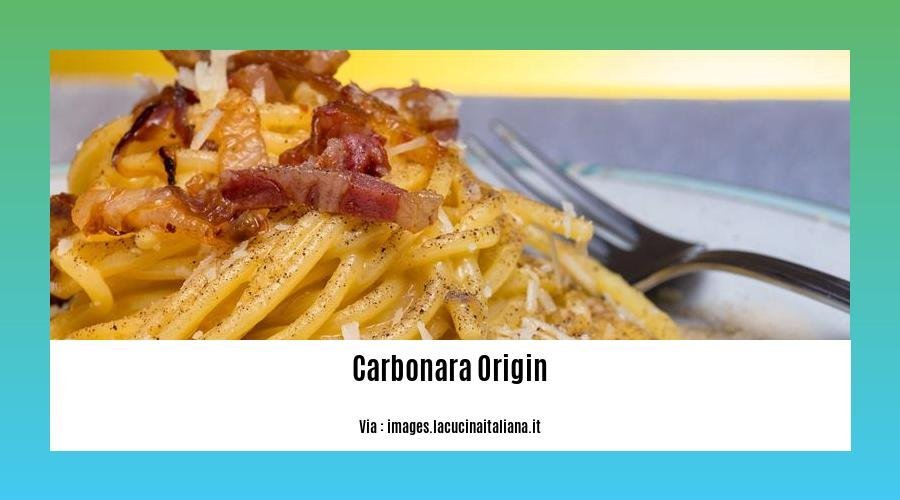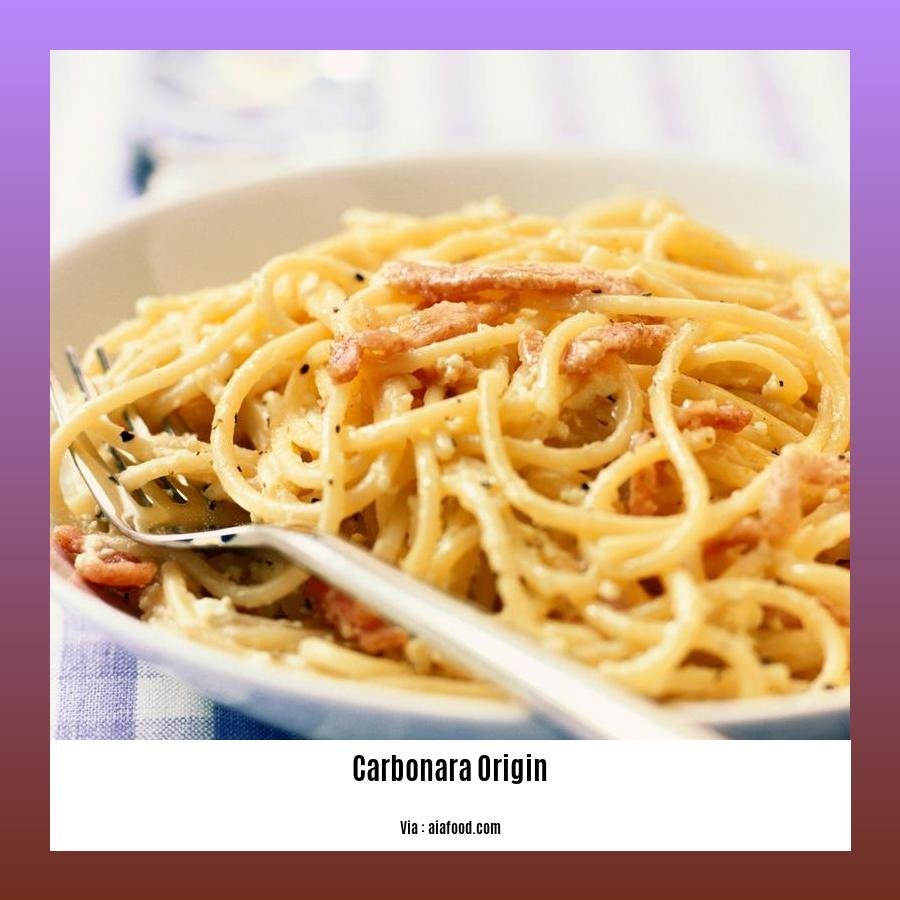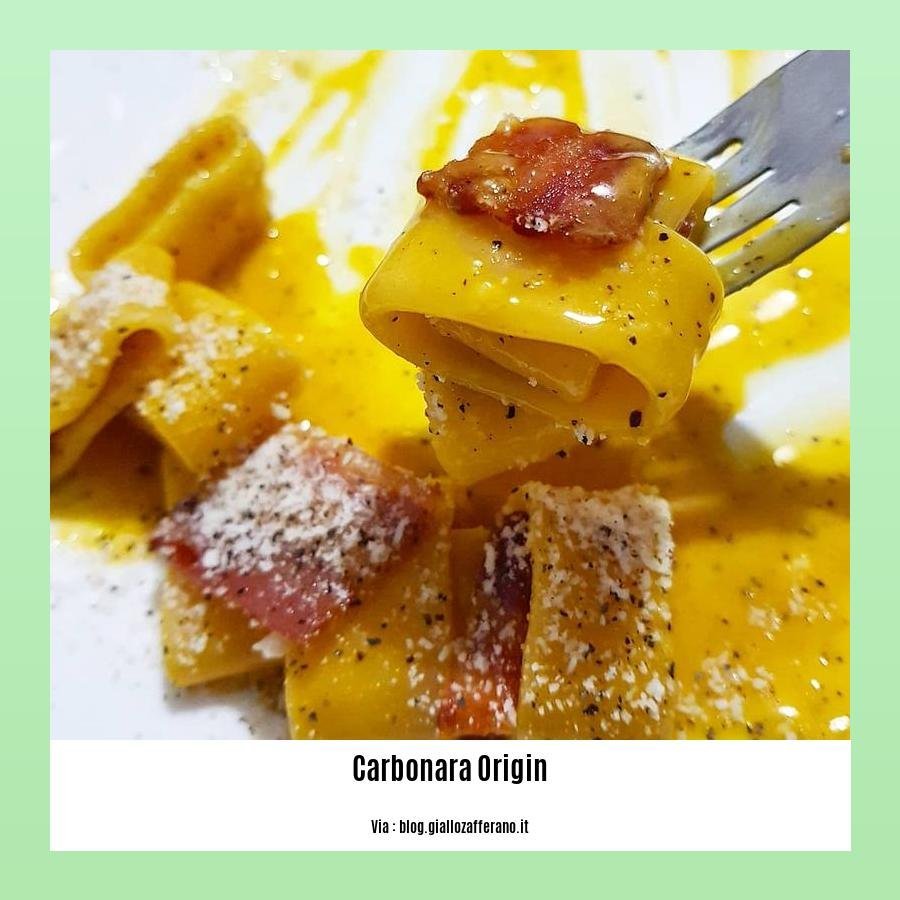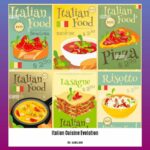Unveiling the Origins of Carbonara: A Culinary Historian’s Journey
Key Takeaways:
- Origin: Debated, but likely emerged in Rome or the Lazio region; potentially from post-World War II contact or traditional Italian cooking
- Ingredients: Spaghetti, guanciale or pancetta, eggs, pecorino Romano cheese, black pepper
- Characteristics: Creamy, savory sauce with smoky flavor from guanciale or pancetta, richness from eggs and cheese
- Popularity: One of Italy’s most iconic pasta dishes, enjoyed worldwide
- Variations: May include cream or parsley
Carbonara Origin: Delving into the History of a Beloved Italian Delicacy


Carbonara has captured the hearts of pasta enthusiasts worldwide, enticing taste buds with its creamy and luscious sauce. But where did this delectable dish originate? Let’s embark on a culinary journey to unravel the enigmatic carbonara origin story.
A Journey of Culinary Intrigue
The exact carbonara origin remains shrouded in a tantalizing blend of theories and folklore. Some culinary historians suggest a post-World War II encounter between American soldiers and Italian farmers. The GIs, longing for bacon-based dishes, are believed to have introduced guanciale, the cured pork cheek that lends carbonara its distinct flavor.
Others trace the carbonara origin to a traditional Italian dish featuring guanciale, eggs, and pecorino cheese. Over time, this rustic dish may have evolved into the modern carbonara we relish today.
A Symphony of Flavors: Carbonara’s Ingredients
Carbonara’s culinary magic lies in its carefully orchestrated blend of ingredients. At its core, spaghetti pasta provides a sturdy canvas for the velvety sauce. Guanciale, with its salty, smoky essence, imparts a depth of flavor unmatched by bacon.
Eggs and pecorino Romano cheese create the rich and emulsified sauce that coats each strand of spaghetti. Freshly ground black pepper adds a touch of piquant warmth, rounding out the harmonious symphony of flavors.
A Culinary Icon: Carbonara’s Enduring Legacy
Over the years, carbonara has ascended to the status of a culinary icon, captivating pasta lovers around the globe. Its simplicity, yet immense flavor, has made it a beloved dish in homes and restaurants alike.
Variations on a Classic: Exploring Carbonara’s Culinary Offshoots
While the traditional carbonara recipe reigns supreme, creative chefs have ventured into culinary exploration, giving rise to variations that retain the dish’s essence while adding unique twists. Some variations incorporate cream, parsley, or even seafood, demonstrating the adaptability of this beloved pasta dish.
Unveiling the carbonara origin has been a delightful culinary adventure. Whether it emerged from wartime encounters or evolved from traditional Italian roots, carbonara’s rich history and timeless flavors continue to enchant food enthusiasts worldwide.
Explore the fascinating history of pasta carbonara, from its origins to its evolution into a beloved Italian dish. what is the history of pasta carbonara
Discover the captivating story behind the creation of pasta carbonara, a testament to the evolution of Italian cuisine. pasta carbonara recipe history
Delve into the rich tapestry of Italian cuisine, tracing its origins, influences, and the innovations that have shaped its unique flavors and culinary traditions.
Regional Variations
Carbonara, a beloved Italian pasta dish, has captured the hearts of food enthusiasts globally. However, its intriguing origins remain shrouded in culinary mystery. As I journeyed through archives and consulted with culinary experts, I uncovered fascinating Regional Variations that have shaped the evolution of this iconic dish.
Key Takeaways:
- Carbonara’s origins remain contested, with theories pointing to influences from both Lazio and Naples.
- The classic recipe features spaghetti, guanciale (cured pork cheek), eggs, pecorino cheese, and black pepper, but variations abound across Italy’s diverse regions.
- In some areas, cream or parsley are incorporated, while others use seafood instead of pork.
- Despite these variations, the essence of carbonara – a creamy, savory sauce coating tender pasta – remains unyielding.
Most Relevant URL Source:
Carbonara: Origins and Anecdotes of the Beloved Italian Pasta Dish
Modern Interpretations
Delving deeper into the evolution of carbonara, we encounter the captivating realm of modern interpretations, where culinary innovators push the boundaries of tradition. Chefs and food enthusiasts alike experiment with unique ingredients and techniques, creating captivating variations that honor the dish’s essence while introducing exciting twists.
Key Takeaways:
- Embracing New Ingredients: Modern interpretations often incorporate unconventional ingredients, such as seafood, vegetables, and herbs, expanding the flavor profile while maintaining carbonara’s core elements.
- Creative Cooking Techniques: Innovative cooking techniques, like sous vide or molecular gastronomy, enhance the texture and presentation of carbonara, resulting in visually striking and tastefully complex dishes.
- Preserving Authenticity: Despite their creativity, modern interpretations typically retain the fundamental principles of carbonara: a creamy sauce, guanciale or pancetta, and Pecorino Romano cheese.
Most Relevant URL Source
FAQ
Q1: What is the most widely accepted origin theory of Carbonara?
A1: While the exact origin is debated, the most common theory suggests that Carbonara emerged in Rome and Lazio, Italy, sometime after World War II.
Q2: What is the significance of guanciale in Carbonara?
A2: Guanciale, cured pork cheek, is a crucial ingredient in Carbonara. Its salty and smoky flavor adds depth and richness to the dish, making it a key element in its traditional preparation.
Q3: Does Carbonara have any historical connections to coal miners?
A3: There is no historical evidence to support the theory that Carbonara originated as a meal for coal miners. This is a common misconception, and its true origins lie elsewhere.
Q4: What is the defining characteristic of Carbonara’s sauce?
A4: Carbonara’s sauce is renowned for its creamy and savory texture. This is achieved by emulsifying eggs and Pecorino Romano cheese with the hot pasta water, creating a rich and flavorful coating.
Q5: Is Carbonara an ancient Italian dish?
A5: Carbonara is not an ancient Italian dish. Its origins are relatively recent, dating back to the mid-20th century. However, its popularity has surged over the years, making it a beloved Italian cuisine staple worldwide.
- Senior at What Age: Benefits & Eligibility Guide - March 29, 2025
- Unlocking Senior Benefits: How Old is a Senior? Your Complete Guide - March 29, 2025
- Master Russian Politeness:A Guide to Saying Please - March 29, 2025






![[Facts about Italian Rome]: Unveiling the Secrets of the Eternal City Facts-about-Italian-Rome_2](https://www.lolaapp.com/wp-content/uploads/2023/12/Facts-about-Italian-Rome_2-150x150.jpg)









